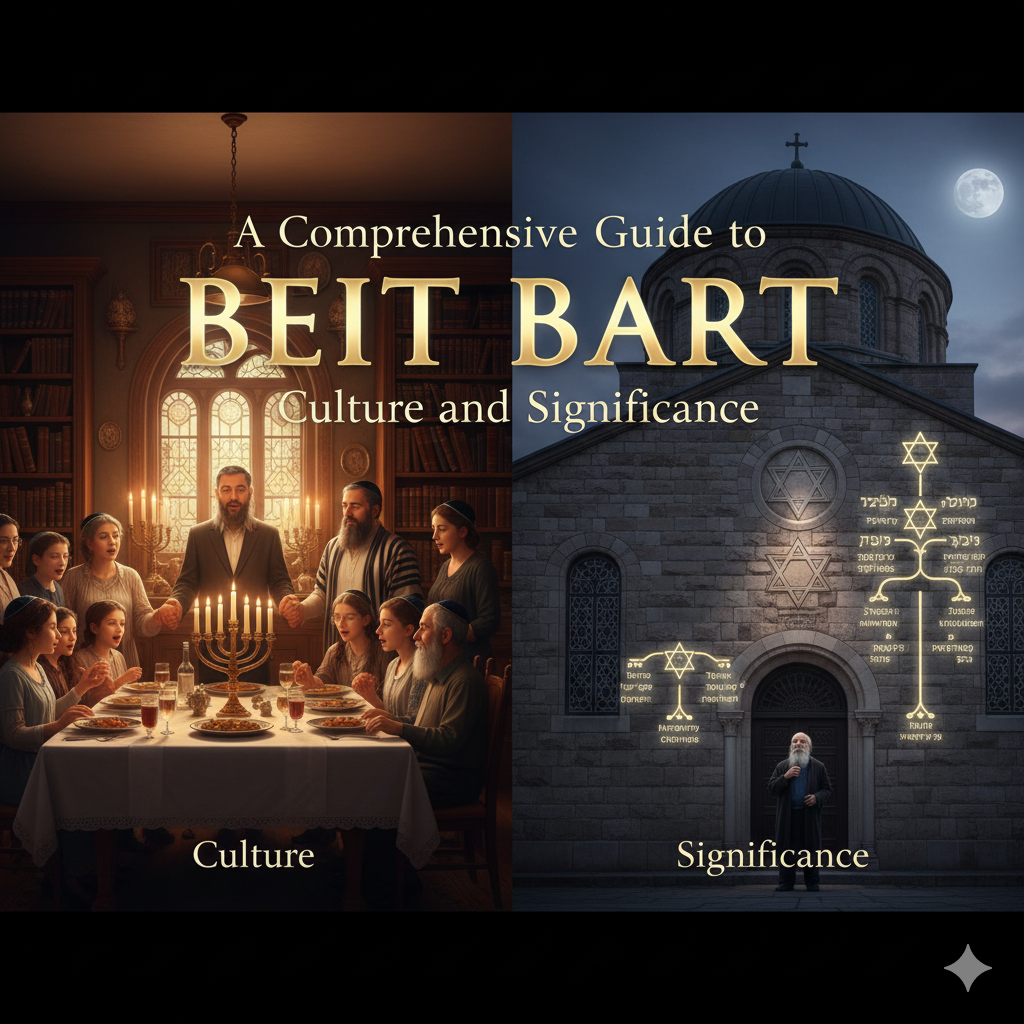Beit Bart is more than just a name; it’s an experience steeped in rich history and vibrant culture. This intriguing tradition captures the essence of community, family, and celebration. As we dive deeper into the world of Beit Bart, you’ll discover its fascinating roots and how it has evolved over time. From traditional practices that have stood the test of time to modern interpretations that keep this cultural gem alive, there’s so much to explore. Whether you’re looking to connect with your heritage or simply curious about what makes Beit Bart special, you’re in for a captivating journey!
The History and Evolution of Beit Bart
Beit Bart has a rich history that traces back centuries. Originally, it served as a communal gathering space for local communities, fostering social bonds and cultural exchange. Its roots are intertwined with traditional practices that highlight the importance of community in everyday life.
Over time, Beit Bart evolved into a multifaceted venue. It adopted various functions—from market spaces to centers of education and celebration. Each transformation reflected the changing needs of society while maintaining its core purpose: connection.
As it moved through different periods, Beit Bart adapted to modern influences yet preserved essential elements from its origins. This blend of tradition and innovation showcases how cultures can grow without losing touch with their pasts.
In recent years, renewed interest in heritage has further propelled Beit Bart into the limelight. People now seek to explore this vibrant space not just for its history but also for what it represents today.
Cultural Significance of Beit Bart
Beit Bart holds a special place in the hearts of many, serving as a vibrant symbol of community and tradition. Its roots run deep within local cultures, reflecting unique identities and histories.
The gatherings at Beit Bart often celebrate not only heritage but also shared values. They provide a space for storytelling, where generations connect through oral traditions and folklore. This exchange fosters unity among participants.
Crafts and performances during these events showcase artistic expressions that embody cultural narratives. Artists draw inspiration from ancestral practices while creatively adapting them to contemporary contexts.
Moreover, Beit Bart serves as an educational platform. Workshops invite individuals to learn about traditional crafts, music, or dance forms passed down through time. Such initiatives ensure that customs endure amidst an ever-changing world.
Through its multifaceted significance, Beit Bart emphasizes the importance of preserving culture while celebrating innovation and creativity in everyday life.
Traditional Practices and Celebrations
Traditional practices surrounding Beit Bart are deeply rooted in community and family bonds. Each gathering often begins with a ritualistic meal, symbolizing unity and togetherness. Traditional dishes such as stews, breads, and sweets take center stage during these events.
Celebrations typically include music and dance that echo the rich heritage of this culture. Instruments like drums and flutes create an energetic atmosphere, inviting everyone to participate.
Storytelling is another cherished practice. Elders share tales from generations past that capture the spirit of Beit Bart. These stories not only entertain but also educate younger members about their identity.
During significant festivals, colorful decorations adorn homes and communal spaces. Participants don traditional attire that reflects cultural pride while enhancing the festive mood of the occasion. The vibrancy of these celebrations truly brings Beit Bart to life for all who partake in them.
Modern Interpretations and Adaptations
Modern interpretations of Beit Bart are reshaping its cultural landscape. Artists and creators draw inspiration from traditional practices, injecting fresh ideas into the age-old customs.
Contemporary festivities now blend old rituals with new forms of expression. Music genres that were once considered unconventional have begun to echo within Beit Bart celebrations, attracting younger audiences.
Social media plays a significant role in this evolution. Platforms like Instagram and TikTok showcase vibrant images and videos, making it easier for people worldwide to connect with Beit Bart culture.
Innovative workshops teach both locals and visitors about the significance behind various traditions while encouraging artistic exploration. This interactive approach fosters community engagement unlike anything seen before.
As traditions evolve, so do their meanings. Modern practitioners often emphasize inclusivity and sustainability, ensuring that Beit Bart remains relevant today while honoring its rich history.
Controversies Surrounding Beit Bart
Beit Bart has faced its share of controversies, sparking debates within communities. Some critics argue that the modern adaptations dilute traditional practices. They feel essential aspects are overlooked in favor of commercial appeal.
Others highlight cultural appropriation concerns. As Beit Bart gains popularity outside its original context, questions arise about authenticity and respect for traditions. This tension often leads to heated discussions among enthusiasts and purists alike.
There are also disagreements about the role of technology in Beit Bart celebrations. While some embrace digital platforms for sharing experiences, others lament a loss of intimacy in community gatherings.
Additionally, political factors can complicate perceptions surrounding Beit Bart events. National sentiments sometimes overshadow cultural expressions, creating friction between different factions within society.
These ongoing dialogues reveal the complexity and multifaceted nature of Beit Bart’s significance today. The balance between tradition and modernity continues to be a focal point for many involved.
How to Experience Beit Bart Yourself
Experiencing Beit Bart firsthand is an adventure in culture and community. Start by visiting local festivals where you can witness traditional performances. Engaging with artisans showcasing their crafts adds depth to your experience.
Consider participating in workshops that highlight local skills, such as weaving or pottery. This hands-on approach will immerse you in the heritage of Beit Bart.
Don’t miss out on tasting authentic dishes at nearby eateries. Local flavors tell stories, and each bite connects you to the traditions of the area.
For a more personal touch, seek out guided tours led by locals who share their insights and anecdotes about everyday life in Beit Bart.
Take time to explore surrounding landscapes. Nature walks can provide serene moments away from the bustling festivities while deepening your appreciation for this vibrant culture.
Conclusion
Beit Bart represents a rich tapestry of culture, history, and community. Its roots run deep, offering insights into the beliefs and traditions that shape its identity. The evolution of Beit Bart reveals how it adapts over time while maintaining core values.
The cultural significance cannot be overstated. It serves as a hub for traditional practices and celebrations that unite people in shared experiences. Even as modern interpretations emerge, the essence remains intact—an acknowledgment of heritage blended with contemporary life.
Controversies may surround Beit Bart, but they only add to its complexity and depth. Engaging with these discussions can provide valuable perspectives on its impact today.
For those eager to experience Beit Bart personally, there are numerous avenues available—from participating in local festivals to exploring historical sites associated with this vibrant tradition. Embracing this journey enriches understanding and appreciation for what Beit Bart truly signifies in our world today.




